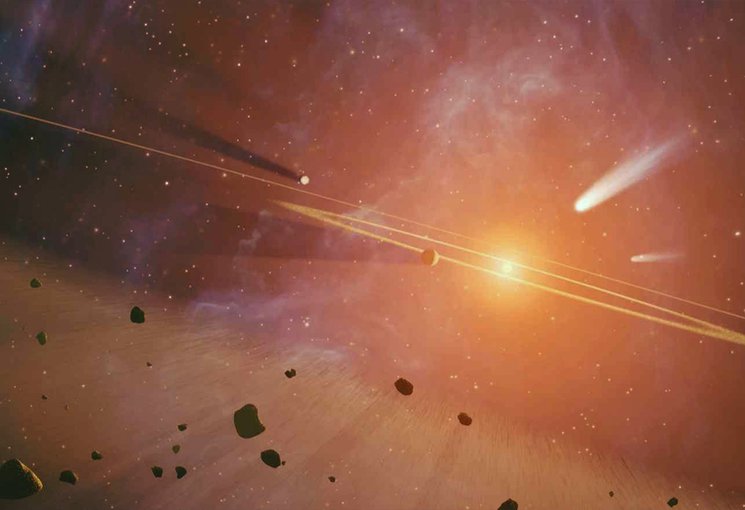
Nov. 12, 2018
Research Highlight
Asuka 881394 and the Story of the Early Solar System

Two comets head in toward a young solar system, with rings of rocky debris.Image credit: NASA/JPL.
A new study reports a re-examination of the achrondrite, Asuka 881394. An accurate estimate of the origin and chronology of Asuka 881394 could help scientists understand the distribution of aluminium and other materials in the early Solar System. Previous studies have shown that this achrondrite is very old (based on 26Al-26Mg and 53Mn-53Cr extinct radionuclide chronometers). However, Asuka 881394 is not the same age as other very old Solar System materials with similar properties. The research team examines how this discrepancy could have implications in understanding the distribution of materials in the early Solar System.
The results of the study bring into question the use of basaltic angrites as an age anchor for the Solar System as a whole, and the authors suggest that this role could instead be filled by well preserved achondrites.
The study, “Reassessing the origin and chronology of the unique achondrite Asuka 881394: Implications for distribution of 26Al in the early Solar System,” was published in the journal Geochimica et Cosmochimica Acta. The work was supported through NASA’s Habitable Worlds Program. The NASA Astrobiology Program provides resources for Habitable Worlds and other Research and Analysis programs within the NASA Science Mission Directorate (SMD) that solicit proposals relevant to astrobiology research.